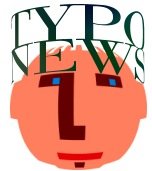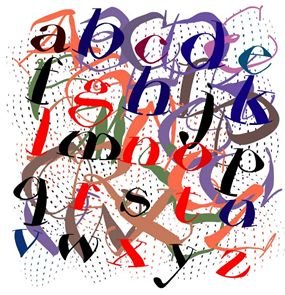| Manfred Klein - the interview | |
| 1) The early years | |
| 2) Günter Gerhard Lange | |
| 3) Kleins Fonteria | |
| 4) Family and philosophy | |
| Manfred @ typOasis |
Until 1982, I left the visual design gladly to my colleagues in layout, the Art Director etc. It's great if one can simply accept their work. My base job included the development of concepts, strategy and all the wording for a project - however, the ADs always accepted me as one of their kind when it came to design problems. So I had a special position compared to other writers and contact men. Image concepts were part of an advertising message: writers might describe them, but they did not have to draw.
When I look at some of my characters I think they would be better transferred to large sizes on canvas. But I took oil, watercolours and brushes out of my hand in 1986, when I realized that a Macintosh was both a typographic and artistic tool. At that time I wrote that something was happening that soon might have a strong effect on the graphical industry. Those who could print Times and Helvetica on a laser printer in a “typographically correct” way would be able to do the same with a lot of other typefaces and of professional quality. There were some colleagues who smiled at me and at my mouse cinema (Mac) - however, many enterprise owners did not get over the following 10 years of the DTP-revolution.
I restarted my own typographic work after 1982, after selling my agency to Ogilvy (today Ogilvy Focus) for personal reasons. I withdrew from numerous old and new customers, because there were too many disgusting compromises to make as a creative supplier (a.k.a. Consultant). There was enough money, so it was possible to say “We had a good time, but now I want to do something else … ”.
 |
First I worked the old fashioned way with paper, adhesive and assembly for Stempel / Linotype, and later for Monotype. I got back to publishing regularly: columns like TypoNews for the Druckspiegel, but with Macs getting a spread in 1986, I also did articles about digital typography, e.g. PAGE, Macup-publishing house, Hamburg. I stopped in about 1990. |
| But also my attitude towards type has changed: I don’t want to copy the old models or scan them slavishly; I recognize my chance to make some old things look different, so they can catch the attention of younger creators - from the professionals up to the lovers. And I understand the ‘font’ format as a container, like a bucket which can hold more than just water. |
 |
You have to study and to respect the old masters. When I decided on the 42-line Bible Gutenberg as my first design work, I was not satisfied with the scans. I took the blurry scans as a starting point; however, I had in mind that the old guy in Mainz and later Koch in Offenbach would have designed sharp, square characters. That was how I intended to make my Johannes G look.



